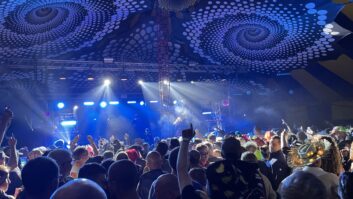In addition to providing information and support, the NVVS also seeks to ensure that people with hearing impairments or disorders have access to well-equipped facilities.
Invented in 1938 by the London-based Multitone Electric Company and then refined for use in larger-scale audio reinforcement applications during the 1960s, induction loops are now generally regarded as the most effective form of assistive listening system.
“Nowadays there are a number of different kinds of induction loop systems, including simple perimeter, 8-shape, pretzels, meander, orthogonal, low-spill, neck loop and cushion systems. They are all designed for maximum effectiveness in different situations,” explained Bert de Jong, project manager of the NVVS Accessibility Committee. “In recent years, induction loops have been installed more and more in public spaces. The word public means ‘accessible to everyone’, which includes those with a hearing impairment. That is the reason why we advocate great attention being paid to the installation of induction loop systems, because if the system is to work properly it is critical to install the correct type of loop and ensure that it is designed for the unique circumstances of each location.”
Churches, theatres, cinemas, conference facilities and colleges are among the countless location types where induction loops are beneficial to the hearing impaired.
Working through its distributor in The Netherlands, Tau Audio, Ampetronic provides equipment and a range of services, including design, testing and training.
De Jong concluded: “In our experience, this combination means that Ampetronic loop amplifiers are the best in their class.”







